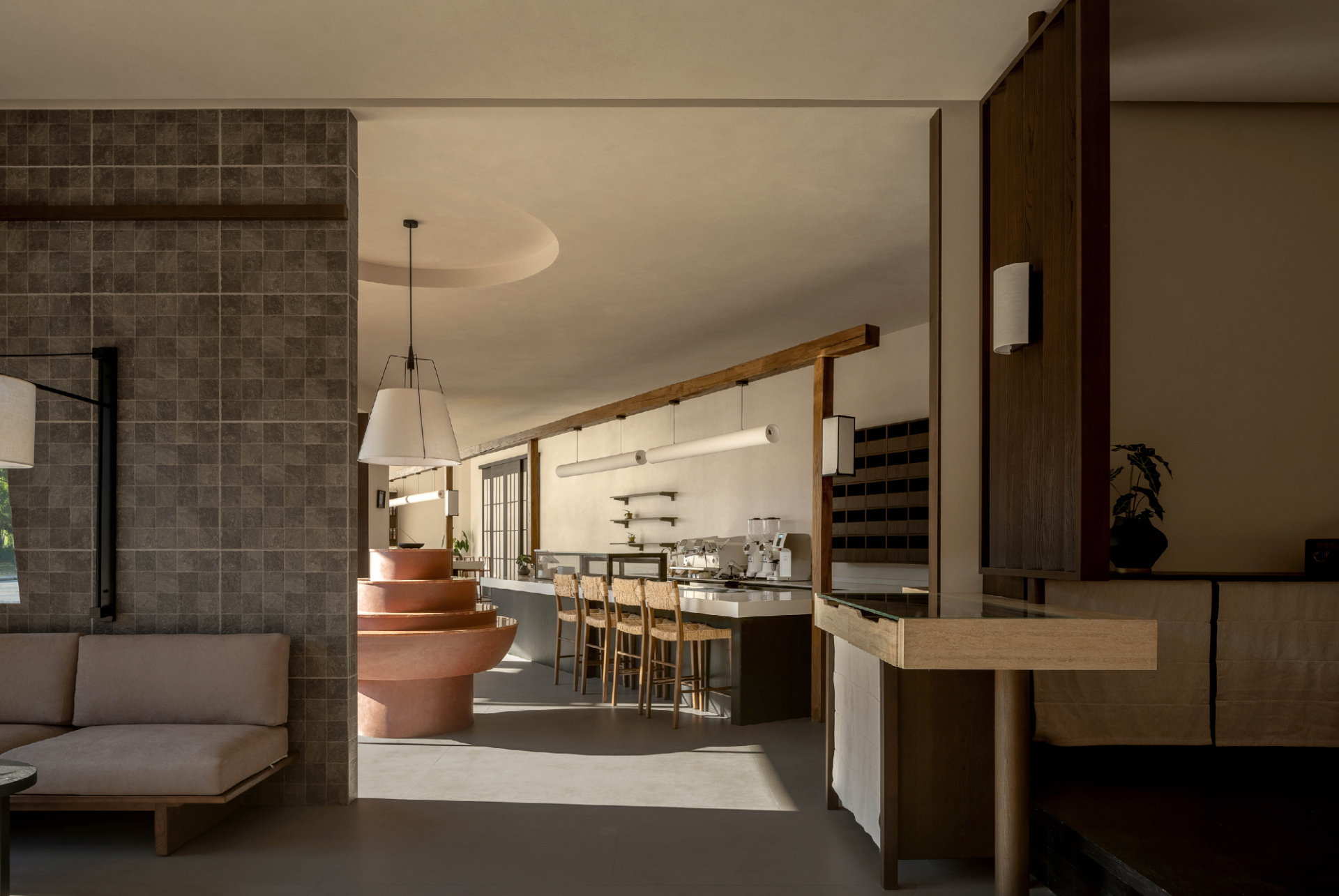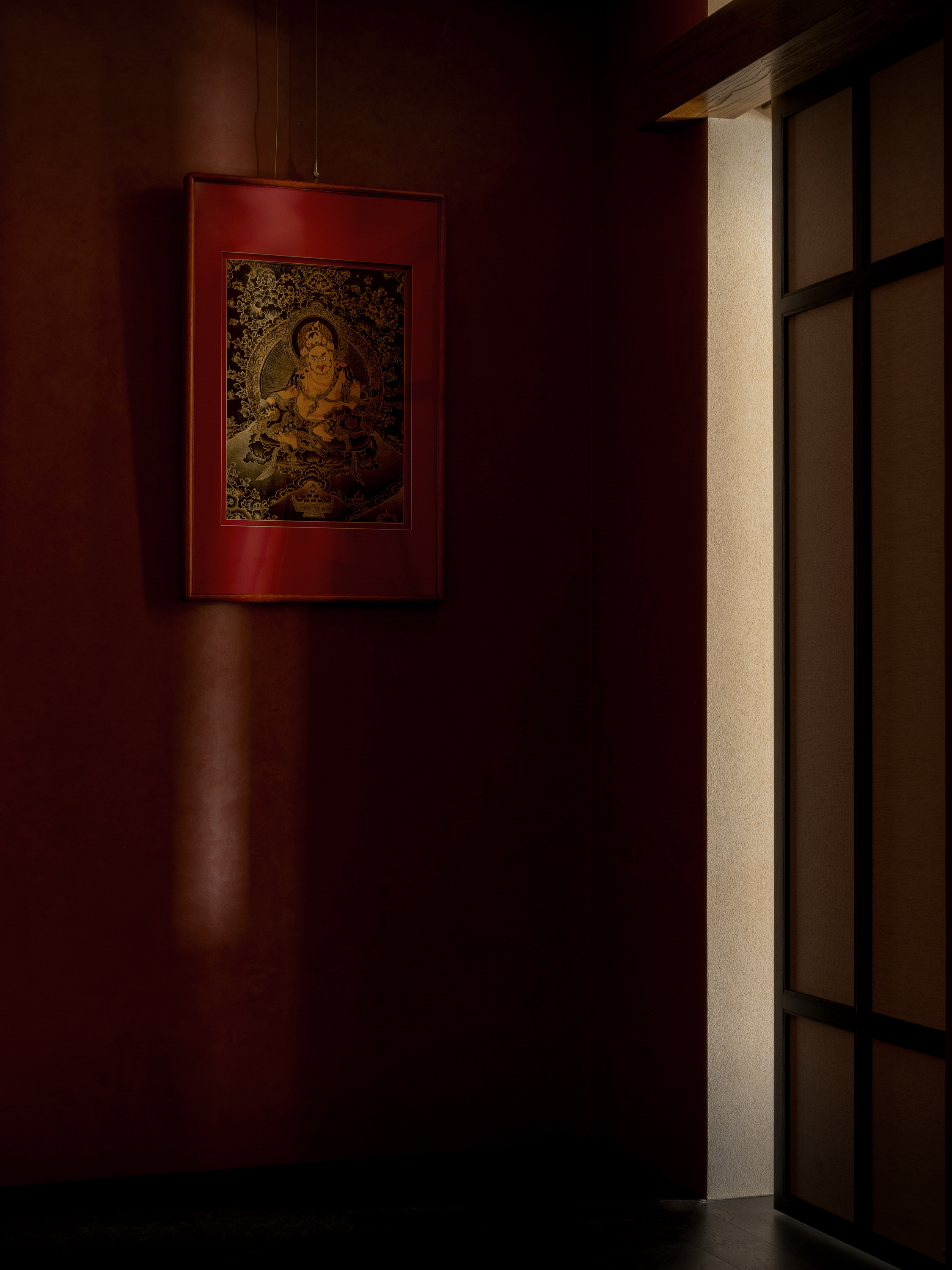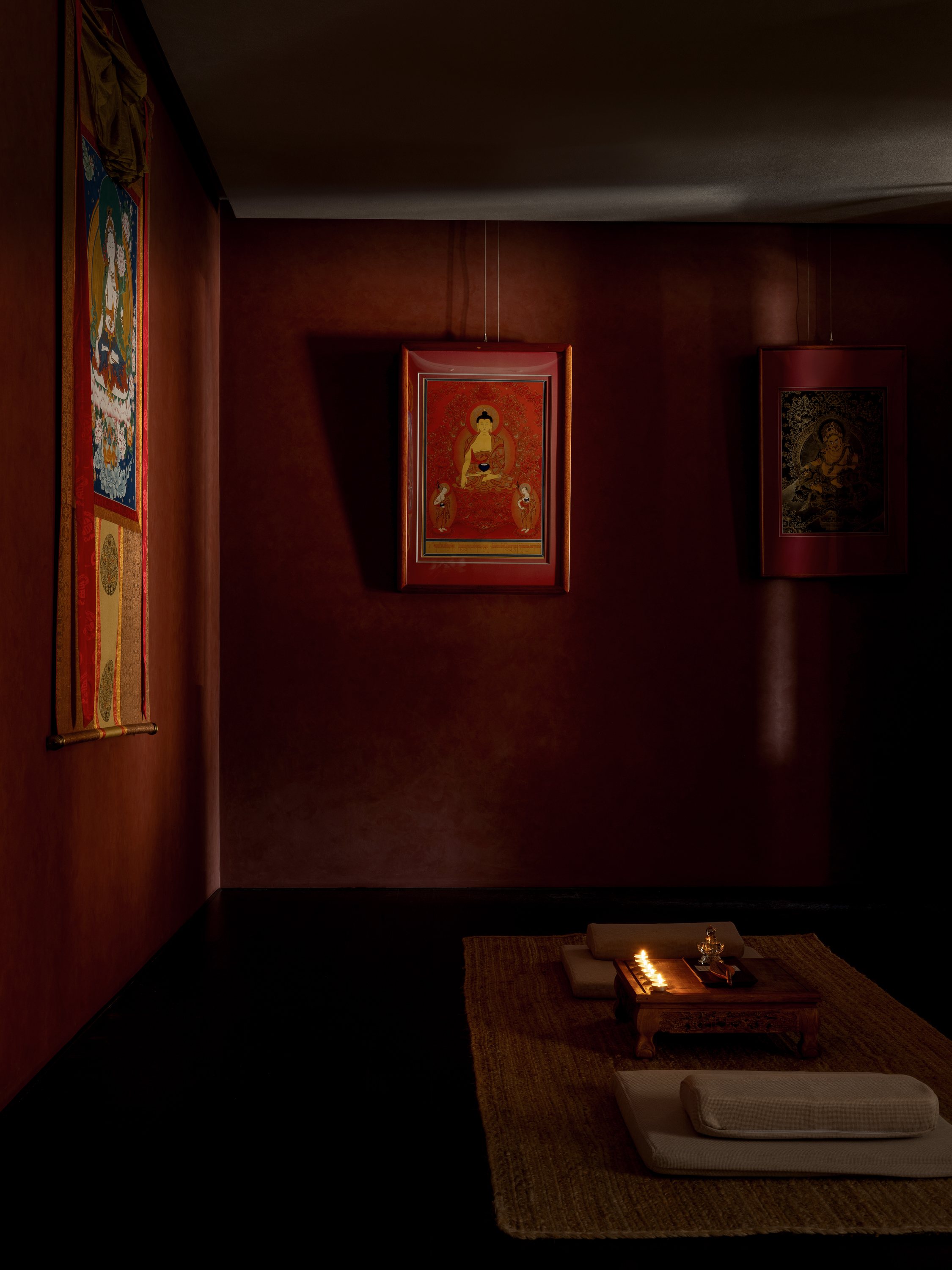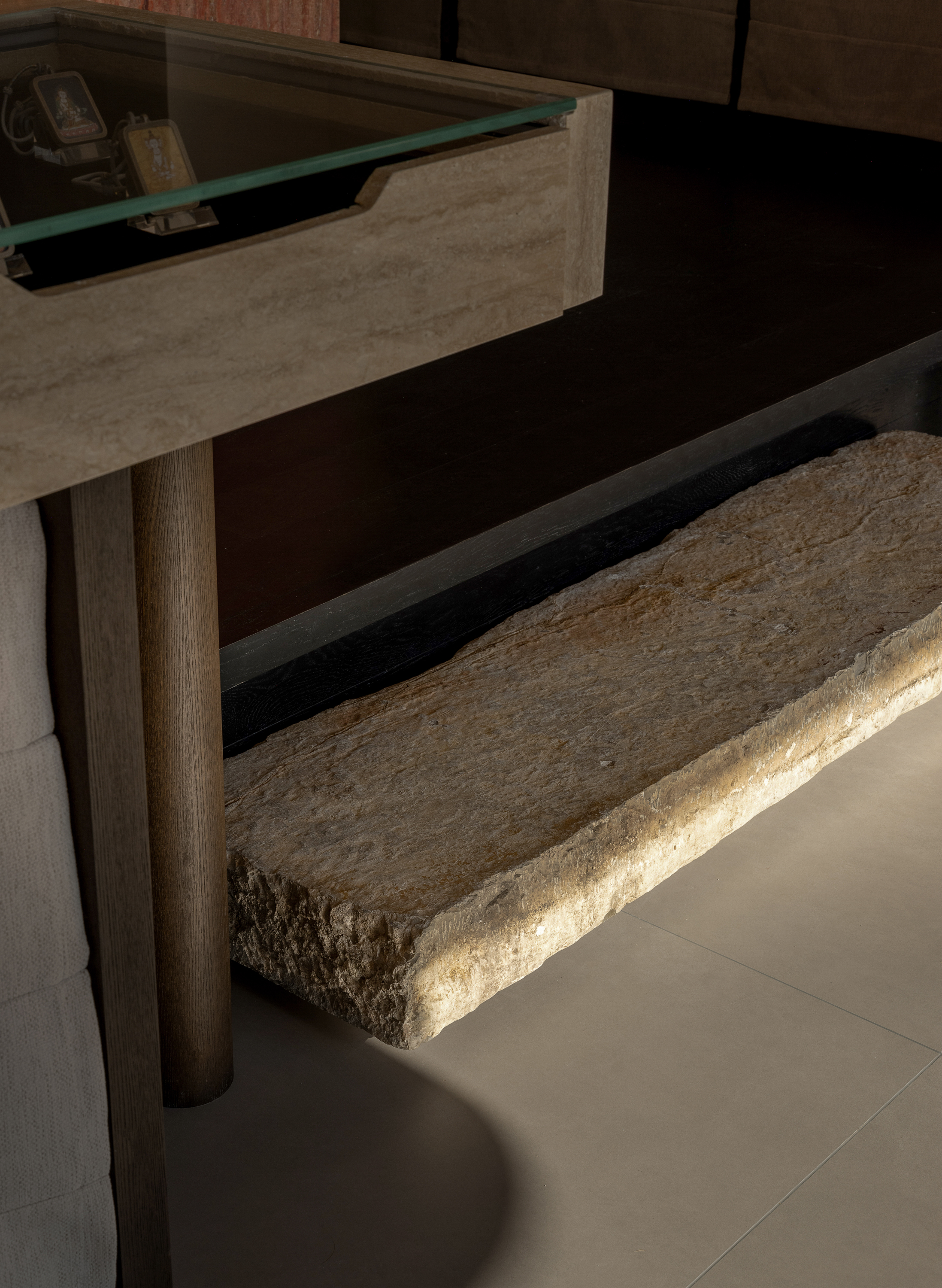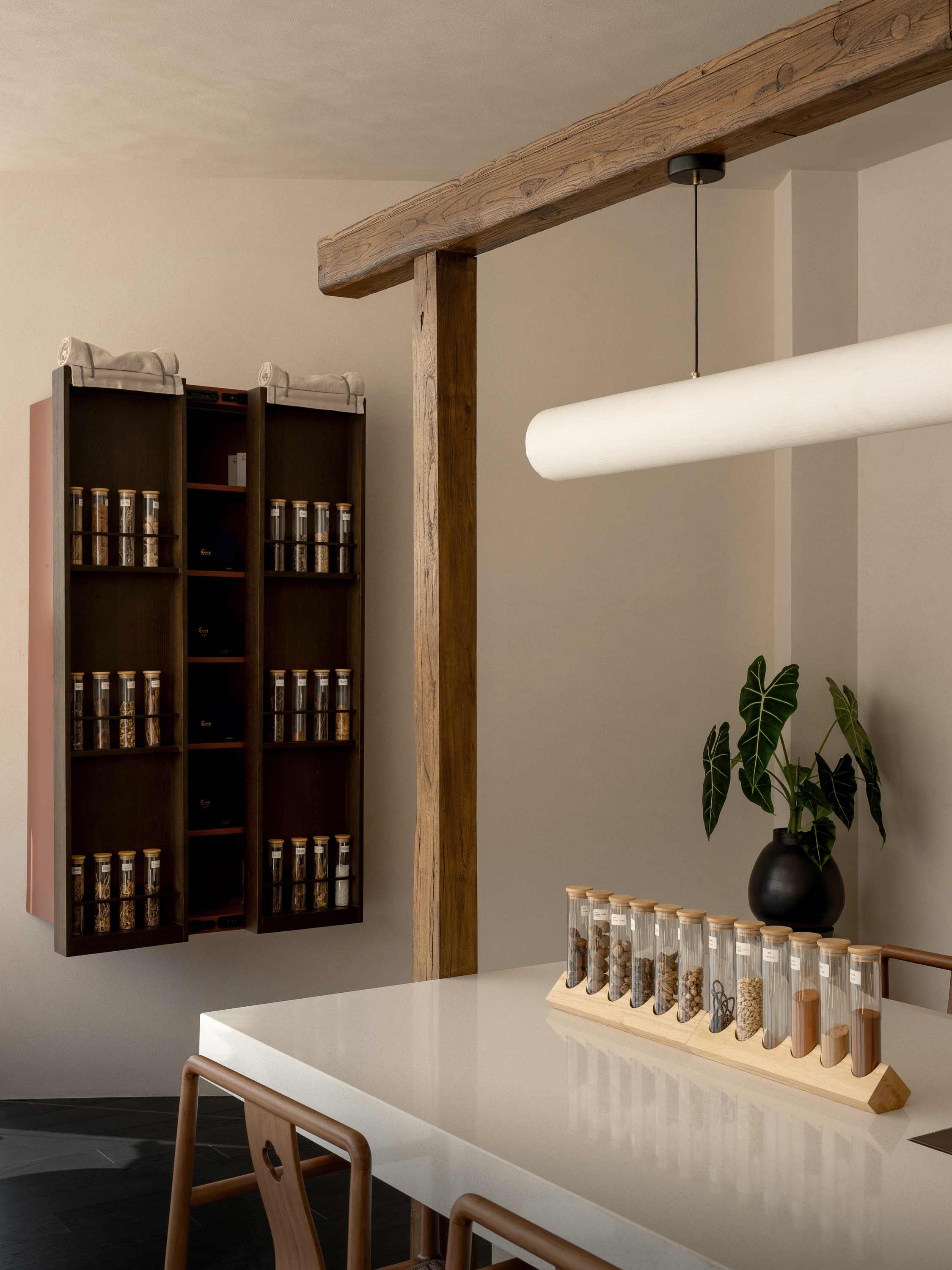This project in Yangzhou is a thangka art space created for “Wuxing Miaoyou.” It offers tea, seating, and a space for quiet reflection and cultural exchange. More than an exhibition, it invites visitors to pause, connect, and experience a sense of calm.
We wanted the space to evoke a sense of spirituality and depth. Rather than relying on elaborate decoration, the design takes a minimal approach to highlight the cultural richness of the thangka.
Given the irregular layout, we introduced axial lines and visual endpoints to create spatial order. Within a limited footprint, the plan organizes a clear rhythm and flow—guiding the eye from one scene to another, transitioning from light to dimness, from lounge area to exhibition core.
The core thangka gallery is set at the deepest end of the space. As light gradually dims and the pace slows, red walls and dark wood flooring create an immersive setting—inviting focus, reverence, and quiet contemplation.
Outside the core gallery, a long bar anchors the space. Together with a long table and movable furniture, it forms a relaxed lounge area suited for daily craft sessions or small gatherings—fostering intimate moments beyond the exhibition itself.
We chose materials that echo the handcrafted, spiritual quality of thangka art. Natural elements like wood veneer, fabric, and travertine are used across floors, displays, and furniture surfaces—serving not as decoration, but as a quiet foundation that supports the space’s contemplative tone.
Centered on the idea of “carrying art,” we designed a refined and restrained display system. Wooden structures, fabric coverings, and hidden lighting offer stable presentation for the thangka pieces while forming a cohesive spatial language that complements and deepens the narrative of the experience.
This space offers a quiet pause within the city. The thangkas hang at its deepest point, inviting visitors to slow down, to connect—with the artwork, with themselves, and with the stillness the space holds.

